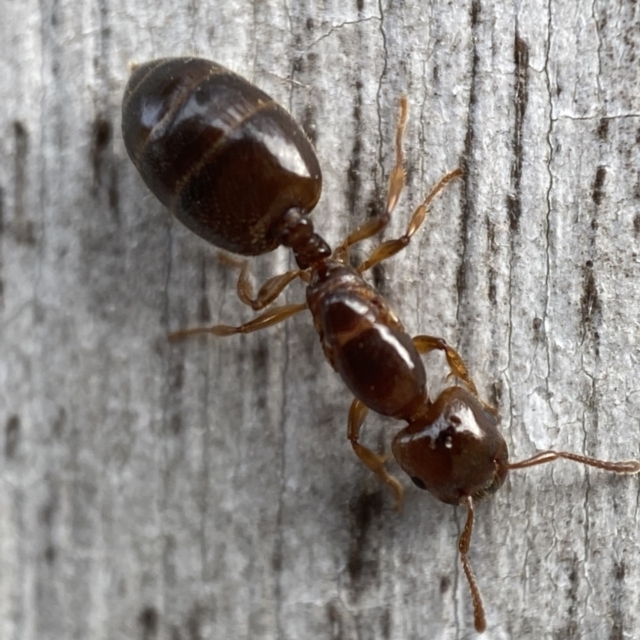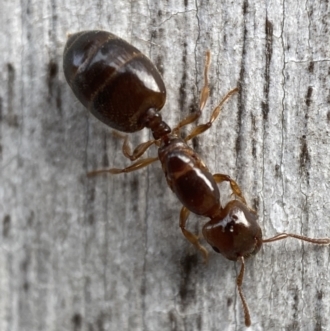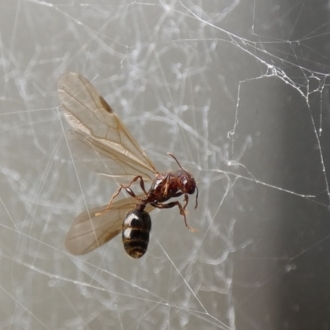Myrmicinae (subfamily)
This is the largest subfamily in Australia, based on both the number of genera and the number of species. Myrmicines range greatly in size, with the smallest about 1 mm long and the largest up to 10 mm. While many species are generalist predators, some specialise on selected soft-bodied invertebrates such as Collembola and others are important seed harvesters. Workers can be found foraging at all times of the day and night, sometimes in large numbers. Nests can be found in almost any suitable location from deep in the soil to the upper branches of trees. Colonies are generally small with a few hundred to a few thousand workers, although some species can have huge nests with many thousands of workers while others form very small nests with fewer than 50 individuals.
Morphologically, these ants are very diverse. Many groups are highly modified with unusual mandibles, elongate spines, elaborate hairs or unique structures not seen in any other ants. Because of this, many genera are relatively easy to identify as they have highly distinctive features which are easily seen (given the appropriate magnification). At the same time, some genera are much less specialised or modified, and separating these from close relatives can be difficult. In these cases, close inspection of subtle differences may be required.
Myrmicines occur throughout the world in all major habitats (except arctic and antarctic regions). They are the largest subfamily of ants with over 6700 species and subspecies and 155 genera. Australia has over 350 species placed in 38 genera. Eight of the genera are restricted to Australia. (AntWiki)
Myrmicinae (subfamily) is listed in the following regions:
Species information
- Myrmicinae (subfamily) Scientific name
- Common name
- Not Sensitive
- Local native
- Non-Invasive
- Up to 624.97m Recorded at altitude
- Machine learning
- External link More information
Follow Myrmicinae (subfamily)
Receive alerts of new sightings
Subscribe












